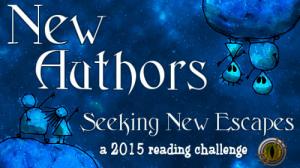I hope everyone’s 2015 ended with some great reading, family, friends, and fantastic food.
Of those I read in the year 2015 — those published in 2015 and before — these are the best in these categories:
Best Series:
Maggie Stiefvater’s Raven Cycle (The Raven Boys, The Dream Thieves, Blue Lily, Lily Blue)
Best Children’s Book: (TIE)
- I Want to Eat Your Books by Karin Lefranc, illustrated by Tyler Parker
- Firefly July by Paul Janeczko
Best Memoir:
Displacement by Lucy Knisley
Best Nonfiction:
LOVE: A Philadelphia Affair by Beth Kephart
Best Short Story Collection:
The Great War: Stories Inspired by Items from the First World War
Best Young Adult Fiction:
Wintergirls by Laurie Halse Anderson
Best Reference:
How to Entertain, Distract, and Unplug Your Kids by Matthew Jervis
Best Women’s Fiction:
French Coast by Anita Hughes
Best Historical Fiction: (TIE)
- Miss Emily by Nuala O’Connor
- The Race for Paris by Meg Waite Clayton
- The House of Hawthorne by Erika Robuck
Best Fiction:
- The Story of Beautiful Girl by Rachel Simon
Best Poetry: (TIE)
- Wet Silence by Sweta Vikram
- Citizen: An American Lyric by Claudia Rankine
Here is the list of BEST BOOKS PUBLISHED in 2015:
- Wet Silence by Sweta Vikram
- The Race for Paris by Meg Waite Clayton
- Vessel by Parneshia Jones
- LOVE: A Philadelphia Affair by Beth Kephart
- The House of Hawthorne by Erika Robuck
- The Mapmaker’s Children by Sarah McCoy
- Miss Emily by Nuala O’Connor
- One Thing Stolen by Beth Kephart
- The Secret of Magic by Deborah Johnson
- The Sound of Glass by Karen White
- Mistaking Her Character by Maria Grace
- Earth Joy Writing by Cassie Premo Steele, PhD
What were your favorites in 2015?













